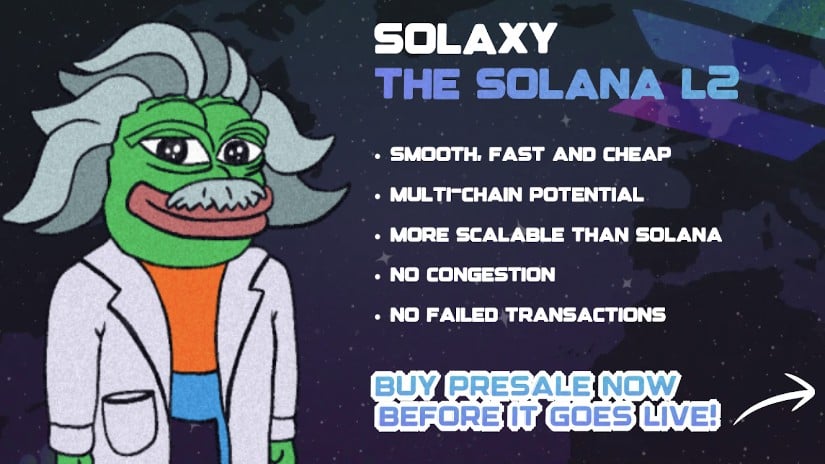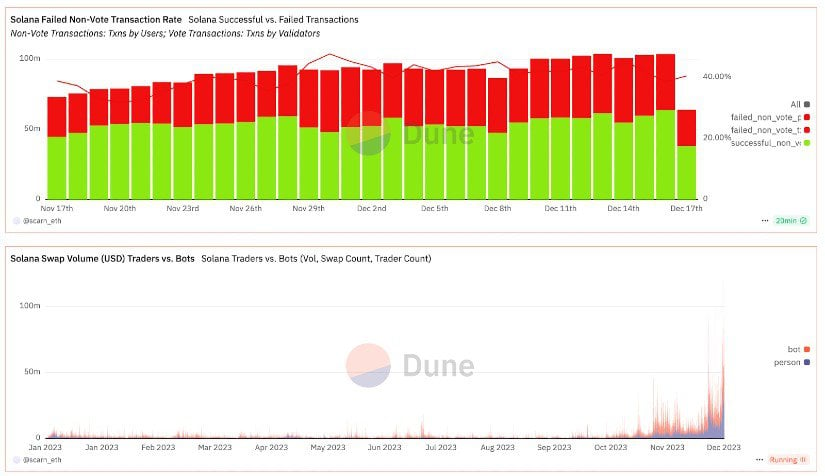Solaxy ($SOLX), the very first Solana Layer-2 solution, reaches $6 million in presale: could it reach new milestones in 2025?
Solaxy ($SOLX) is the new Layer-2 solution for Solana and has reached a major milestone and raised $6 million in its presale just days after its launch.
Solaxy is not just another protocol: it is the first layer 2 solution on Solana that could solve persistent problems such as network congestion, transaction failures and limited scalability.
These improvements could make Solana not only faster and more reliable, but also much more convenient for everyday traders and developers.
If you’ve been frustrated by slow transaction speeds or high fees, this could be the kind of move that changes your view of blockchain.
Let’s check the details.
Solana faces growing pains – can Solaxy be the solution traders need?
Solana’s meteoric rise as the blockchain of choice for launching meme coins has been both a blessing and a curse.
THE Solaxy ($SOLX) The token, however, could be the breakthrough traders have been looking for.
Over the past few years, Solana has become known for its ability to handle high transaction volumes at a fraction of the cost compared to Ethereum. Its speed, affordability, and developer-friendly environment have made it the go-to platform for countless meme coin launches.
But this very success posed major challenges.
With thousands of meme coins debuting on Solana daily, often through no-code platforms like Pump.fun, the network has experienced congestion and inefficiencies.
This is where Solaxy ($SOLX) comes in. Beyond simply solving scalability issues, Solaxy connects two major blockchains – Ethereum and Solana – to create a truly interconnected ecosystem.

This integration could pave the way for a multi-chain framework and bring smoother operations, new possibilities for developers and a better experience for traders.
Solaxy Enables Multi-Chain Potential with Solana and Ethereum Integration
Solaxy could redefine what’s possible with a multi-chain application layer that connects the speed and affordability of Solana with the liquidity and security of Ethereum’s DeFi ecosystem.
As Ethereum continues to dominate the crypto space, hosting the majority of DeFi activity despite its scaling challenges, Solaxy is introducing a way to bridge the best features of both networks.

By making $SOLX a multi-chain token, Solaxy enables seamless interaction between Solana and Ethereum, so that users and transactions can flow freely between these two systems.
Ethereum’s move to proof-of-stake has brought some improvements, but its scalability hurdles remain. Layer 2 solutions have helped, but multi-chain innovations like Solaxy offer a broader solution.
At the same time, Solana has established itself as a successful blockchain, praised for its speed and cost-effectiveness. However, it has not entirely escaped its own challenges, such as limited interoperability and network strain.
This is where Solaxy shines: bridging gaps, addressing limitations, and creating new opportunities for developers and merchants to leverage the strengths of both ecosystems in ways that neither chain could achieve alone.
The root causes of Solana’s network bottlenecks: Is Solaxa the solution the market has been waiting for?
Solana’s scalability issues stem from an overwhelming number of coin launches, which generate spam transactions.
These transactions, often orchestrated by bots, attempt to slip into blocks via shorter queues, but most fail to execute, thus clogging the network.
The problem doesn’t stop with the parts themselves. Some applications, like the ORE game, which uses a proof-of-work type mechanism for distributing airdrops, have also put a strain on Solana’s network.
At its peak, ORE players consumed up to 16% of the total blockchain capacity. Combine this with the staggering failure rates (up to 25% of Solana transactions fail, and during peak periods, 70% of non-voting transactions fail) and you can see why congestion remains a pressing problem.

While Solana developers are making strides to improve network performance, such as implementing the QUIC protocol for improved reliability and preparing to upgrade Firedancer to increase throughput, these measures alone are not enough not completely resolve scalability bottlenecks.
This is where a layer 2 solution like Solaxy comes in. It not only complements Solana’s efforts, but provides an immediate and scalable solution.
By reducing congestion and optimizing transaction flow, Solaxy ensures that Solana remains a fast, reliable and efficient platform.
Conclusion
Solaxy has the potential to improve the Solana ecosystem by addressing challenges such as spam transactions, congestion, and scalability issues.
As the first-ever Layer 2 solution on Solana, it could improve speed and reliability while seamlessly connecting Solana to Ethereum.
With its multi-chain approach, staking rewards, and ability to combat persistent network inefficiencies, Solaxy stands out as a project to keep on your radar.
This is a sponsored post. The opinions expressed are solely those of the sponsor and readers should conduct due diligence before taking any action based on the information presented in this article.

